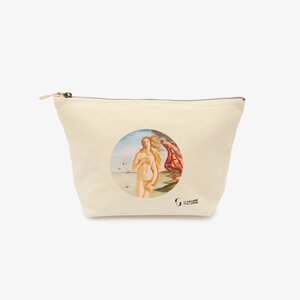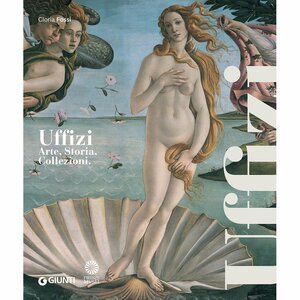Independent artist, advertising graphic designer, author of books for children and adults, inventor of industrial products and of the Macchine inutili: during his long and prolific career, Bruno Munari (1907–1998) was everything and its opposite. Driven by unquenchable curiosity and boundless imagination, he succeeded in merging fantasy and ingenuity, creative freedom and design in works that still feel original and relevant today.His activity as a designer was widely acclaimed, and Munari was awarded the Compasso d’Oro—the oldest and most prestigious recognition in the field—no fewer than four times. And you might be surprised to learn that the credit also goes to a little monkey…
Award-winning creations, symbols of open and innovative design
Munari’s output was vast and varied. From sculpture to illustration, from publishing to light installations and industrial design, there was hardly any field he did not explore. An exploration that reveals his contacts with the historical Avant-Gardes: his Futurist acquaintances at the end of the 1920s (he personally knew Marinetti, who considered him the most promising artist in Milan), his Dadaist incursions, Surrealist influences. He approached these movements but never fully adhered to them. His approach was personal, rooted in experimentation, dynamism, irony, playfulness, lightness, and aesthetic research. Stylistic and design matrices that characterised much of his work, and which later developed into a true teaching method for children’s workshops.
“To preserve a childlike spirit within oneself throughout life means to preserve the curiosity to learn, the joy of understanding, the desire to communicate,” Munari used to say. And indeed, he who had spent his childhood in the Veneto countryside, with nature as his playmate, carried out his artistic activity with the same childlike spirit. Perhaps, then, it is not so strange that his first Compasso d’Oro was awarded for a children’s toy!
Zizì, the little monkey (1954)
In the late 1940s Munari collaborated with Pirelli, producing various advertising posters. One day, a manager from Pigomma (the Pirelli division specialising in foam rubber products) asked him what could be created with this material. Munari requested some samples to study. What struck him most was the texture of the foam rubber: soft and elastic, it reminded him of the sensation of touching a pet. From this simple and spontaneous observation, two toy-creatures were born. The first, in 1949, was the cat Meo Romeo; the second, in 1952, the even more essential Zizì little monkey. Using reinforced foam rubber crossed by a wire structure, Munari designed a flexible and adaptable little monkey. Its movable arms, legs and long tail could be bent into countless poses, encouraging the imagination of those who played with it. The white face, bearing only a simple smiling line, winked discreetly, without slipping into the excessive cuteness of typical children’s toys.

This very feature did not go unnoticed when, two years later—at the very first edition of the Compasso d’Oro—Zizì was awarded the Prize. “Normally toys are ‘realistic’ or infantilised reductions of mechanical devices, or equally realistic or infantilised imitations of animals or human figures” read the official grounds. “This little quadrumane by Munari […] represents instead an interpretation of the ‘character’s personality, reaching a formal essentiality in the use of the material—foam rubber supported by a steel wire structure—which allows for endless playful possibilities. This toy belongs to a higher category, arousing intellectual interest.”
In 2022 Corraini Edizioni reconditioned a few pieces originally produced in 2007 by Tecnoassemblaggi Toys, handmade and marketed as real design objects to be handled with care. And yet, it is impossible to resist: even the cage-shaped packaging invites one to set Zizì free and unleash its enormous creative potential.
The Mod. 510 Table Ice Bucket (1955)
Munari’s genius lay in his ability to balance imagination with rigour, design and aesthetic inspirations, achieving a result of remarkable harmony. This is why in 1955 the jury awarded another of his designs: the Mod. 510 Table Ice Bucket, created for TRE A – Attualità Artistiche Artigiane.
Here, the designer “gave a form stripped of decorative complacency to a product that industry usually insists on treating as a ground for unrestrained fantasy”. The ice bucket (21.5 cm high, 19 cm in diameter, in anodised aluminium) was deliberately stripped of unnecessary embellishments: sober and minimal, it perfectly synthesised function and decoration. “The pure form, born from the needs of production techniques, and the technical-formal harmony between feet and handle are guarantees of controlled creativity.”
In the later re-edition by Zani & Zani, the same qualities of the original are found: a rounded container with coloured exterior and natural interior, capable of preserving ice for 5–6 hours. The outer dome rests on three small legs and is closed by a lid concealing the ice tongs. Proof, once again, of Munari’s care for even the smallest details.

Abitacolo (1979)
It takes just 8 screws to assemble, but the possible configurations are endless. Abitacolo is a transformable structure for children and teenagers. Two large horizontal shelves can be placed at various heights to support a mattress or other objects, while the sub-modules (table, shelves and storage units) can be attached anywhere. “Abitacolo is the essential inhabitable space. Figuratively, it is also the intimate recess of the individual, the inner place where everything that makes up one’s world is located,” Munari explained in 1971.
Eight years later, after a long suspension of the Prize, the jury awarded Abitacolo the Compasso d’Oro.
An ideal balance of functionality—its modules are easy to move and use—and aesthetics—its simplicity invites maximum personalisation—it was also a tangible example of Munari’s belief in democratic, accessible design. “In adults’ homes, not all children have a room of their own to transform and furnish as they please” he continued. “Abitacolo aims to solve this problem structurally, aesthetically, and—no less importantly—economically.” Abitacolo thus became the answer to a social issue: domestic environments that were inhospitable to the young or inadequate in giving them sufficient space, often for economic reasons. To address this, Munari once again devised a project that was simple and effective, made of painted steel rods assembled together. “The whole structure weighs 51 kilos. It is as solid as if it were welded; even a fat and disagreeable adult can climb onto Abitacolo without breaking it. In fact, tests have shown that Abitacolo can support as many as twenty people”.

Lightweight and versatile, Abitacolo was produced by Robots and later acquired by Rexite in 2013. Like Munari’s other works, it confirmed his unique ability to interpret people as well as markets, and to meet their needs by enhancing the everyday experience of design, also through interaction. Those who use his products, like the viewers of many of his works, become an essential part of the object’s nature, its appearance and its purpose. His projects are meant to be acted upon, individually and freely, not merely contemplated.
Are you interested in articles like this?
Sign up for the newsletter to receive updates and insights from BeCulture!
The well-deserved Lifetime Achievement Award (1994)
In 1994 Munari received a final Compasso d’Oro, this time for his lifetime achievements: “For having, in sixty years of work as a designer and artist, created one of the most extraordinary examples of sensitive intelligence, critical humour, humanity in design, and above all, a joyful overcoming of every barrier to creativity.”
His works, writings, and educational methods remain relevant and widely used today, telling the story of a man who turned imagination into his greatest ally—remaining, in this, truly unrivalled.










